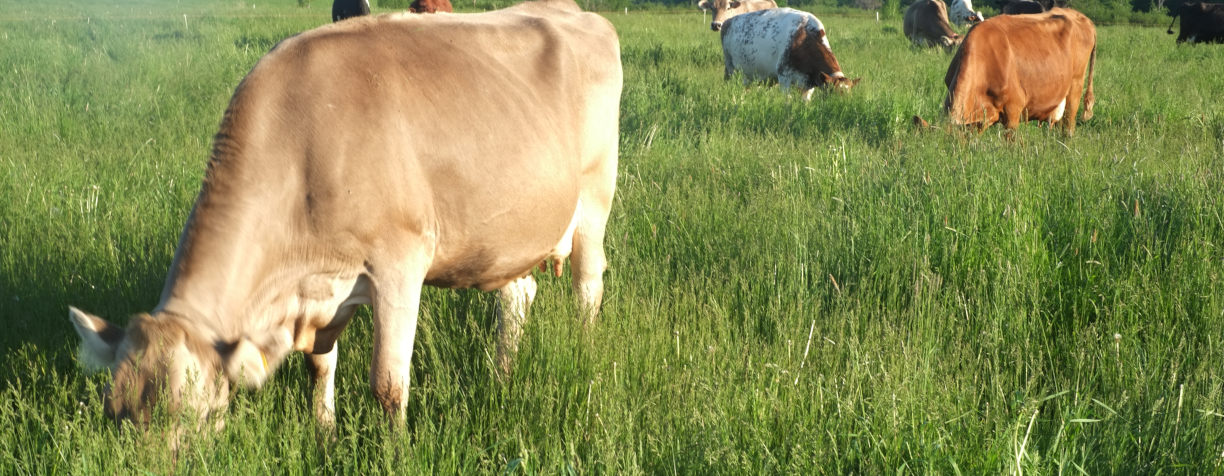By Fran O'Leary
Farm Progress
The cost of buying a farm, a herd of dairy cattle and machinery to operate that farm make it nearly impossible for a young person or couple to get started farming on their own today.
That's one of the reasons a group started Dairy Grazing Apprenticeship.
“The apprenticeship program provides a pathway for farmers to start milking cows on their own,” says Joe Tomandl, executive director of the program. Tomandl grazes dairy cattle on two farms that he owns near Medford in Taylor County.
Grazing operations involved in the program milk between 40 and 700 cows.
“This is an alternative to the ‘get big or get out’ philosophy,” Tomandl says. “The margin is there to support a family with this size of dairy.”
First in the nation
This is the first farming apprenticeship program in the U.S.
“There are so many young people who want to milk cows, and there are a lot of farmers who want to retire,” Tomandl says. “The apprenticeship program allows farmers to retire and sell their farms to someone who wants to milk cows, and it allows young people to get started farming.”
The two-year federally registered apprenticeship involves 4,000 hours of instruction.
“The apprentice is an employee for two years on a dairy farm,” Tomandl says. “We currently have 87 dairy farms that are approved to hire an apprentice, with 32 apprentices placed.”
The apprentice is a paid employee of the farm where he or she works.
“The farmer chooses the apprentice from applications online,” Tomandl explains. “It's almost like a dating service. Getting the right match is important.”
Tomandl acknowledges that not all apprentices end up farming, but most do. While some farmers bring their own family members through the program for a transfer of knowledge from one generation to the next, most apprentices are not related to the farmer.
“The program was set up for operations that don't have a family member to take over their farm,” says Laura Paine, program director for Dairy Grazing Apprenticeship.
The program teaches apprentices all of the competencies a farmer needs to know to manage his or her own farm.
“The two-year course covers everything from ear-tagging and feed budgeting to business planning, and everything in between,” Tomandl says.
The program started in Wisconsin with the Department of Workforce Development Bureau of Apprenticeship Standards in 2010.
“We are an approved education provider for the Wisconsin Farm Service Agency Beginning Farmer Loans,” Tomandl says. “Then we took the next step and registered it with the federal Department of Labor in Washington, D.C. What's happening here is happening in others states, too. We're getting applications from all over the country.”
In addition to Wisconsin, the grazing program is working with apprentices in Minnesota, Missouri, Pennsylvania, Vermont, New York, Maine and New Jersey.
“We like to partner with in-state organizations like the Small Farms Program at Cornell University in New York,” Tomandl explains. “They are helping administer the program through us. This is a nonprofit program funded by federal grants and regional foundations. We're trying to bring more industry into this, because we think industry will see the benefit.”
Apprentices who train on the farm for at least two years and successfully complete all requirements graduate to Journey Dairy Grazier status and receive an official Journey card from the U.S. Department of Labor’s Employment and Training Administration. Journey Dairy Graziers have the option of eventually becoming Master Dairy Graziers and taking on apprentices themselves.
There are currently 88 master farms (farms with apprentices) participating in the program.
“They need to have five years of grazing experience or be certified organic for five years to be approved [as a Master Dairy Grazier],” Tomandl says. “Once they are approved, they can bring an employee through the program. If they don't have an employee, they can go through the list online to find someone. We help them set up the apprenticeship, and we visit with the apprentice and the master farmer every month to follow up.”
Dairy Grazing Apprenticeship also sets up pasture walks and other group activities so apprentices can tour other farms and network with other apprentices and farmers.
“We bring in feed representatives, agronomists and industry representatives to speak to the groups,” Tomandl says.
He says there are additional benefits to increasing the number of grazed dairy operations.
“Grazing-based systems help stop some of the unintended consequences of dairy cattle in confinement, like soil erosion from monocropping, surface- and groundwater contamination, as well as soil carbon loss,” he says. “These are problems that go away when you have perennial pastures. Cover crops and grassed waterways help, but we don't know if it's enough.”
Making agriculture stronger
Tomandl thinks having a variety of dairies in the industry makes agriculture stronger.
“I think we need to be proactive. It's not about big dairies vs. grazing. Grazing needs to be a tool in the toolbox,” he says. “If all of our agriculture looked the same, then it would be very vulnerable. We need different management systems to make it stronger. Our industry needs to be diverse, and we need enough people to keep it vibrant.”
Smaller dairies, those with 200 cows or less, keep local businesses and cooperatives going.
“Studies show farms that have more than $2 million in revenue buy less from local businesses,” Tomandl says. “Farms that have gross revenue under $1 million a year buy local.”
Adding more dairies enhances a community, he notes.
“What if we added 12 new farms in one school district? Then you have 40 more kids who are growing up on farms in that school district. How great is that? Dairy Grazing Apprenticeship is a way to train skilled workers to manage those farms and train the next generation.”


